Tortuguero Scenes, Plants, and Wildlife
16-18 December 2005
This page last updated 6 January 2006
Tortuguero is a small town on the Caribbean Ocean in northeast Costa Rica. A large national park has been established immediately adjacent to the town (Parque National Tortuguero), primarily to protect the nesting habitat for sea turtles.
The town of Tortuguero is a very small (low-key) beach resort town, located on a narrow sand island between the Caribbean Ocean and the inland lagoons and canals of the extensive wetlands in this part of Costa Rica. It is accessible only by river boat and small planes. Look at the first and third maps on my "Costa Rica Home" page to see just where Tortuquero is. Basic information about Tortuguero and the area can be found at this Tortuguero National Park website. A webpage for a Smithsonian photographer is good to visit also.
Tortuguero National Park, located just south of the town and west (inland) consists of a natural system of canals and lagoons, was established in 1970 primarily to protect the nesting grounds of the Atlantic Green Sea Turtle, largely at the urging of Dr. Archie Carr, who started conservation efforts here in 1955. Tortuguero is also the nesting grounds for another six species of sea turtle, the manatee, caimen crocodiles, about 30 freshwater fishes, and monkeys, reptiles, amphibians, many bird species, and lots of tropical plants. Eleven habitat types have been identified within the park, variously dominated by Crabwood, Banak, Santa Maria, Bully Tree, and Dove Wood trees, and covers an area of 18,946 hectares (51,870 acres), one of the largest protected tropical rain forests in Central America. One website claims that the park is home to: 57 species of amphibians, 111 species of reptiles, 309 species of birds, 30 species of freshwater fishes, and 60 species of mammals. This Costa Rica National Parks website
provides nice summaries and information about each of Costa Rica's national parks, including Tortuguero National Park. Go to my "Costa Rica Birds" webpage listed below to see a number of the birds I saw at Tortuguero.
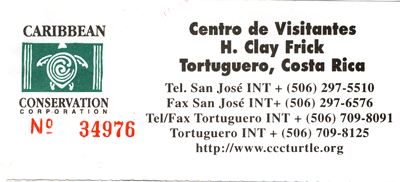
Our Caravan tour took us to the Laguna Lodge just north of the town of Tortuguero. More information about the Laguna Lodge can be found at this website. We found this lodge to be very nice, but remember that they have the hot and cold water valves switched in the showers than we are used to. We had a cool shower until we figured that out. We used the Laguna Lodge as our basecamp for river boat excursions into Tortuguero National Park.
CounterData.com

personal finance Counter
All photos copyrighted by David L. Magney 2005.
Links to other Costa Rica photo pages
San Jose Area Photos
Poas Volcano National Park Area Photos
Braulio Carrillo National Park Area Photos
Tortuguero National Park Area Photos 2
Grecia Metal Church and Sarchi Photos
Arenal Volcano Area Photos
Jaco Area Photos
Cloud Forest Photos
Manuel Antonio National Park Photos
Rio Frio-Los Chiles Area Photos
Costa Rican Bird Photos
Costa Rican Butterfly Photos
Banana Plantation Photos
Costa Rica Home
Photos of the Tortuguero Area
Our tour of the Tortuguero area begins with a ride on a long, gravel road past small hamlets and vast banana plantations to a boat launch near the mouth of a river. Here are a couple of photos of our river boat, which will take us north on the Tortuguero lagoons and canals to the Laguna Lodge at Tortuguero.
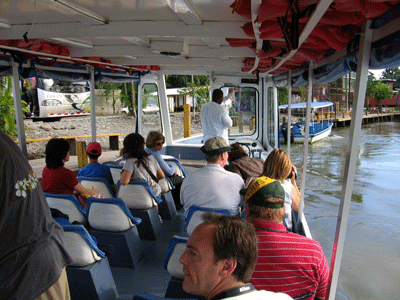
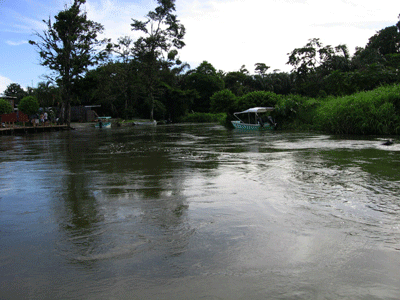
Here is a short video clip of our river boat, while sitting at the dock. It will play as soon as it is loaded. Right click with your mouse to access "Play" to run the video again.
![]()
Here can be seen the breakers of the Caribbean at the mouth of the river, with the broad coastal lagoon bounded by tropical rainforest.
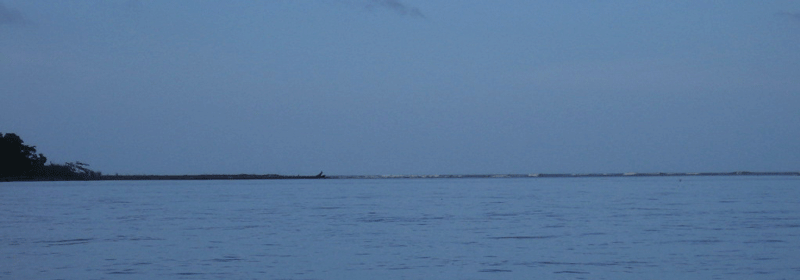



As we travel north we pass small settlements along the way, and the water changes. Our boat travels over 25 MPH.
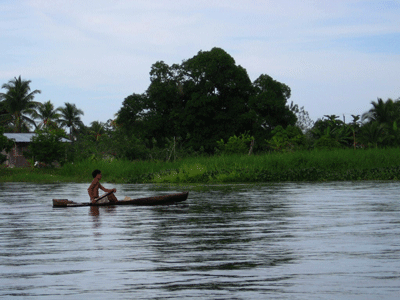
![]()
As we enter the fresh waters fed by the rivers entering the Tortuguero region, the tannins from the trees leached into the water, giving the water a dark tea color. This has the effect of making the surface of the water mirror like when still. The result is a surealistic expansion of the rainforest vegetation into the depths of the water, and defining the point between the surface of the water and the surface vegetation a visual challenge.
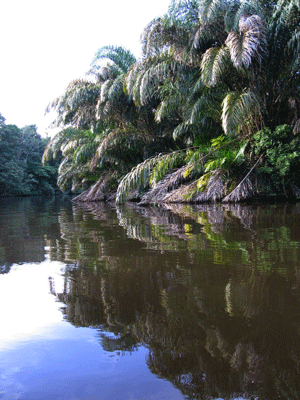
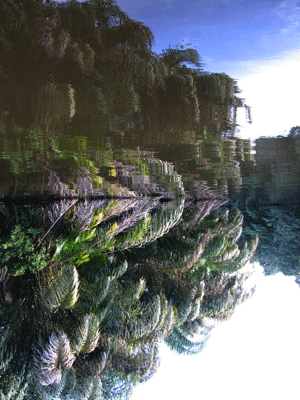
The Raphia Palm or Yolillo Palm (Raphia taedigera) is one of the dominant trees in this area, particularly along the edges of the rivers and canals, as seen in the picture on the left, above, and below.

![]()
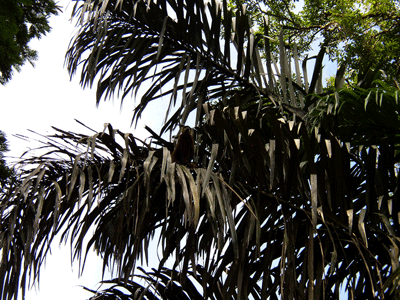
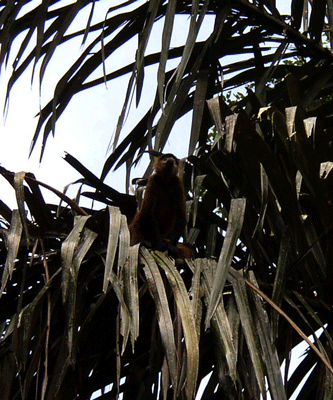
I ask you, can you tell which way is actually up?
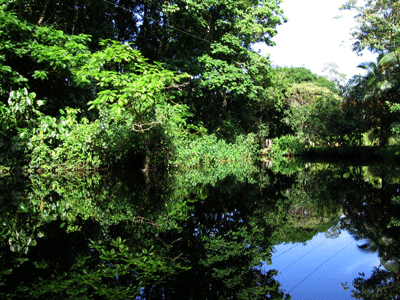
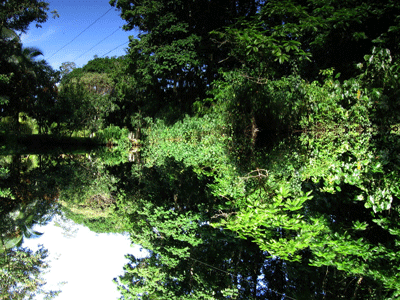
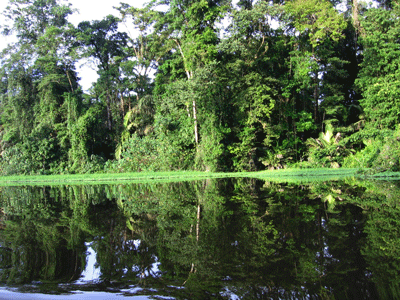
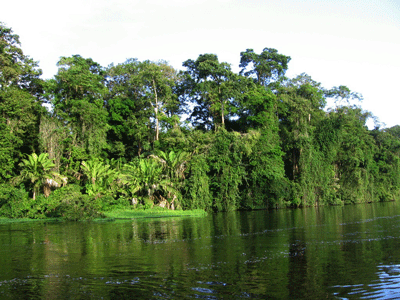
After a little over an hour's river boat ride, we passed Tortuguero and approached our lodge, Laguna Lodge, but not before obtaining our entrance tickets at the park ranger station.
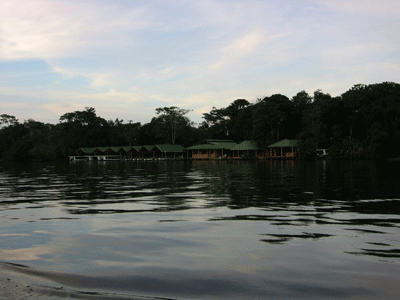
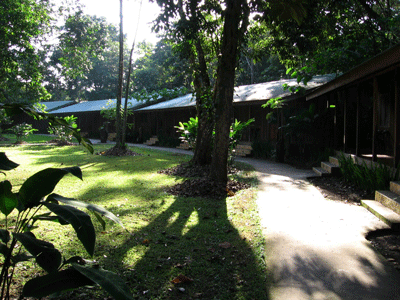
After settling into our rooms and having lunch, we boarded small, narrow river boats for a tour of the narrow canals through Tortuguero's tropical rainforest, looking for wildlife.
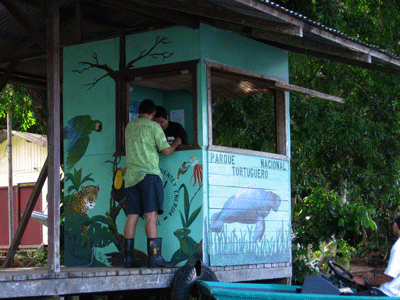
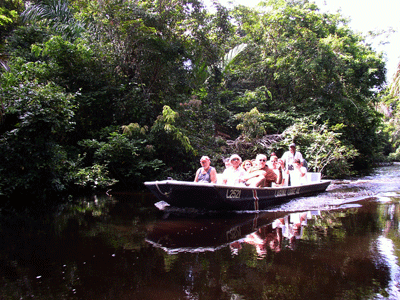
![]()
Such as a Two-toed Sloth (Choloepus hoffmani). These sloths have a home range of only about 2 hectares, and the females leave their territories after weaning their young, which is the opposite of most other mammals, which force their young to go find their own territories to feed and live.
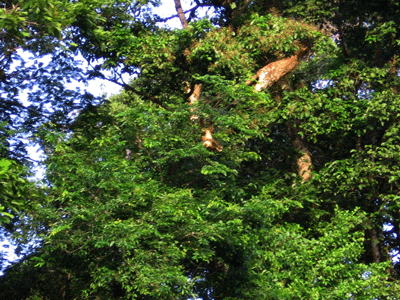
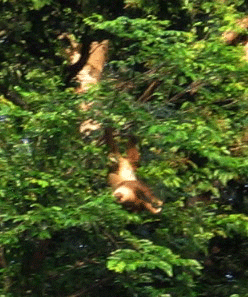
And a large male Green Iguana lizard (Iguana iguana) high in his treetop perch, in full mating color.
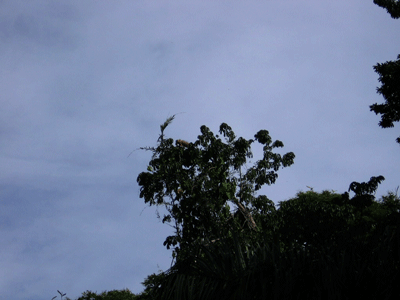
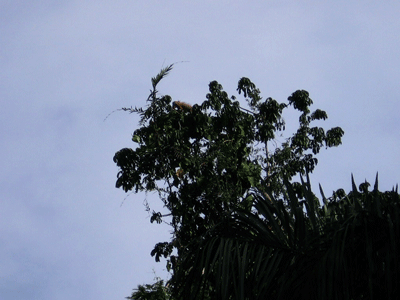
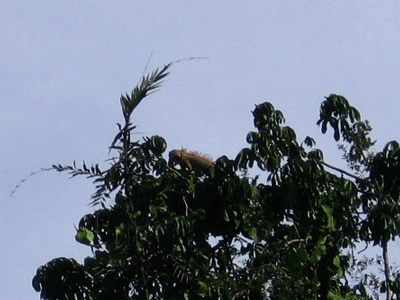
And Howler Monkeys (Alouatta palliata) congragrating in the trees.
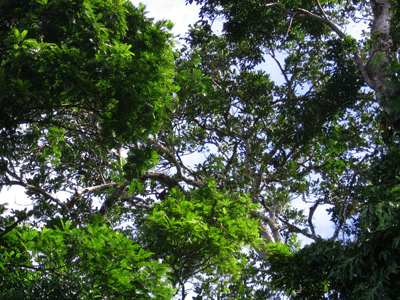
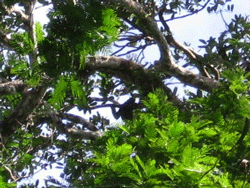
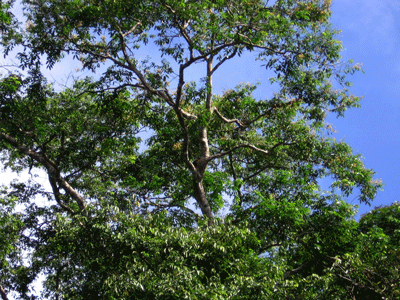
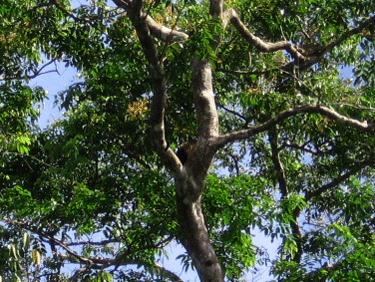
A Black River Turtle or Tortuga Negra del Rio (Rhinoclemmys funerea) keeps a close eye on a mature Caiman (Caiman crocodilus).
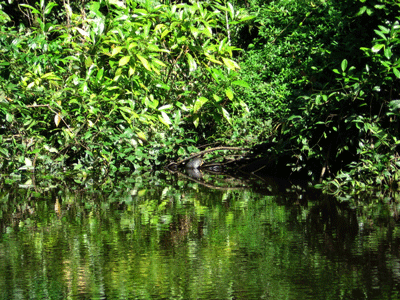
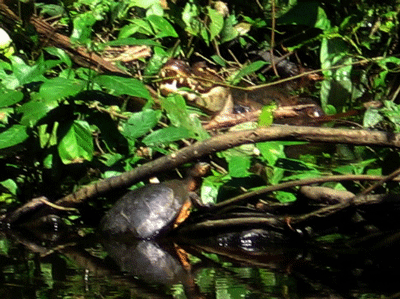
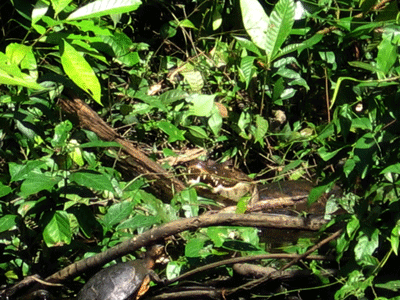
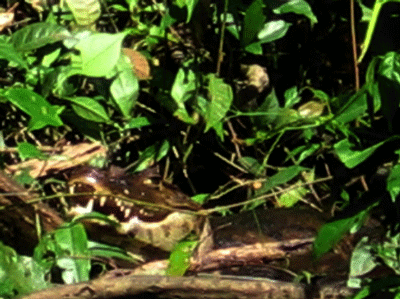
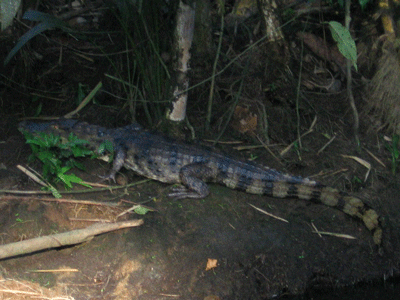
And then there is the lizard that walks on water, the Green Basilisk or Jesus Christ Lizard (Basiliscus basiliscus) [go to my page for the Rio Frio to see one indeed walk on water]. The one on the left with the large "fins" is the male, which the finless lizard is a female.

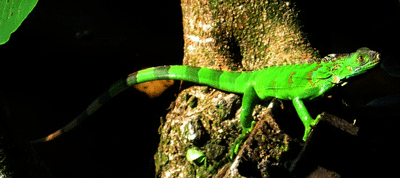
Go to this next page to see the rest of my photos from the Tortuguero area.
Tortuguero National Park Area Photos 2
Costa Rica Home
Photography Home Page
Photography Site Map
DMEC Home




































